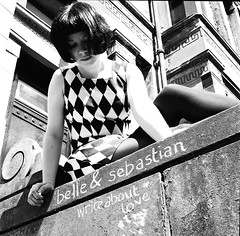It’s not often you get to see two similar brand rollouts side by side and see clearly why one way is better.
As you know, sports fans tend to get closely attached to their team’s brand… and nowhere is that more true than when it comes to college sports.
Arizona State University (ASU) has been trying to differentiate itself over the past few years… in some ways successfully, and in others… well, not so successfully. ASU Athletics, working with Nike, created a unique launch campaign leading up to the April launch of its new and improved brand. To help fans, alumni, and the media prepare for the upcoming changes… and to generate some buzz… they produced a series of dramatic and emotional videos teasing the new branding to come. The first video of the “It’s Time” campaign was released on March 1, followed by this one on March 9, this one on March 16, this one on March 24, this one March 29 and this one on April 1. Ya gotta check them out – they are really top-notch quality and focus on the emotion and pride behind college sports.
At no point in the early part of the campaign did they mention it was specific to changing the brand. They just continued to leak bits and pieces about the fact that the new branding was coming. They apparently handed out cards with an invitation to an event for ASU boosters before the launch (with no details beyond the “It’s Time” messaging) and then launched a video that generated lots of buzz (even on ESPN) about what they planned to announce on the full launch date of April 12.
Rumors and speculation abounded that there would be a new logo for ASU athletics (potentially something that plays up the trident/pitchfork), new uniforms (including some alternate designs/colors similar to, but not as extreme as Oregon’s multitude of uniform combinations) and that the image of Sparky the Devil would be removed from the ASU football helmets. That last part had lots of Sun Devils choosing sides on whether this is good or bad for ASU. ASU hew this would be controversial to make these changes and that is why they address it in one of the last videos, saying “don’t fear change” and showing other changes from the past. Fans and alumni always have strong opinions on any changes, just as customers and employees have strong opinions when a company changes it branding (especially a logo).
ASU embraced many usual social media channels as well… YouTube, Facebook, Twitter, etc.
Here is the final brand launch press release from April 12 and the online press room.
What did they do right:
- They didn’t just create a new logo in vacuum, but based it on a clear brand strategy and message
- They stayed authentic to who ASU is and what it stands for
- They planned. Yes, planned. They created a multi-stage, timed campaign to speak to various audiences (the public, alums, the press) and built buzz and excitement, which can lead to better adoption and acceptance. This teaser campaign gave them a chance to tell the story behind the new brand before anyone got caught up in colors and typography. It also gave people a chance to get used to the idea of change.
- They leveraged social media for maximum impact
Contrast that with Washington State University (WSU), who approached their brand change with a simple press release and unveiling event. They also collaborated with Nike on this rebrand for almost a year.
Why the changes? For both schools, it was lack of consistency in brand image and colors, a need to update and refresh a dated brand look and a general need to move forward into the future. “Throughout the project, equal attention was devoted to maintaining an appreciation for the traditions of the past, while positioning ASU for the future.”
Thanks to my good buddy and ASU alum Peter Olson for contributing most of this post.



